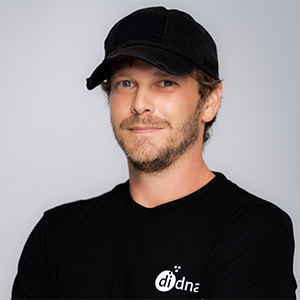
Every industry is feeling the results of inflation, and many speculate the thought of a potential recession happening sooner than later.
A recent Digiday study points out that 67% of publishers foresee a recession within the next six months, which casts a dark cloud over those seeking new revenue streams. Many are scrambling to figure out how they will stay afloat during such wavering times.
Fortunately, diDNA, a leading publisher tech provider, released a new and improved version of its video monetization solution that will help combat recession worries.
diDNA combines its industry expertise, high-quality demand, and technical expertise in a platform that enables publishers and ad tech vendors to scale their video monetization programs.
As a top Google MCM Program Partner, the ad tech company is mindful of adhering to strict ad quality guidelines, transparency, and account structure. This will ultimately assist advertisers in competing in a fair, transparent, and competitive marketplace when looking to buy publisher inventory.
This new revenue solution quickly drives significant revenue increases and automation by using a custom rules engine that helps publishers implement, test, and iterate on the functions needed to improve performance swiftly.
“At diDNA, we recognize that programmatic has become multi-faceted and video is a huge driver of revenue for publishers,” said Deke Hooper, CEO and Co-founder, diDNA. “We’ve designed this solution with publishers in mind so that they can hit the ground running quickly with video by leveraging what we already know about what works, which configurations generate high RPMs, and what types of demand we should serve and fill to generate revenue.”
We spoke with Hooper about how this update demonstrates diDNA’s commitment to serving publishers best-in-class tools that will help them see more revenue, enhance user experiences, improve viewability, and retain higher RPMs.
Yakira Young: diDNA’s new video solution uses an enhanced custom rules engine with updates that have the power to increase publisher revenue significantly. What are some of these updates?
Deke Hooper: Our video rules engine now uses key video-specific metrics to optimize performance for video ads. These include metrics such as completion rate and skip rate. As these metrics improve, publishers are able to obtain higher-tier exchanges and become eligible for other revenue streams, such as Private Marketplace (PMP) deals, further increasing revenue.
YY: How does the new video solution help to improve automation?
DH: If a publisher’s current workflow involves manually setting rules, segments, and other manual processes, our solution will create automation where automation did not exist.
YY: What makes diDNA’s video solution stand out as a best-in-class tool for retaining a faster ROI than similar video solutions?
DH: diDNA only supports the highest quality exchanges. To maintain those relationships, we have strict guidelines based on performance. Our exchange partners trust that we will deliver high-quality websites with high-quality traffic.
Our focus on quality over quantity allows us to obtain PMP and direct deals that create a healthy advertising mix with multiple revenue streams and competitive rates across the board. Our relationship with top exchanges also significantly reduces time to revenue for publishers. Rather than having to go to multiple exchanges and wait months for approvals individually, they can go through us and be onboarded to multiple exchanges in a matter of weeks, drastically increasing the quality of their programmatic ad stack and driving fast performance increases.
YY: Publishers can connect to 70+ tier-1 ad exchanges. How does this solution allow advertisers to compete for publisher’s inventory in a fair and competitive marketplace?
DH: A fair marketplace is the cornerstone of a healthy advertising supply chain. At diDNA, we closely watch the supply chain and implement supply path optimization tactics regularly. We aim to limit arbitrage and reduce reseller channels to ensure we provide our publishers with unique demand. There’s a big difference between shifting money around in the ad stack and generating more revenue for one of our partners.
YY: Can you elaborate more on diDNA’s partnership with the Google MCM program? What is its significance to brands?
DH: MCM is a net positive for the advertising industry and our relationships with publishers. As per Google, “With Multiple Customer Management (MCM), Ad Manager publishers can earn revenue with the help of third-party providers who can consult, represent, and manage networks or inventory on their behalf.” The MCM program is a strict framework that helps us ensure compliance with a complex network of policies for publishers. When our MCM invite is accepted, publishers can rest assured knowing that industry regulations meet their needs and your ad program is compliant. Our relationship with Google also gives us access to beta testing programs that can help increase revenue for publishers before they may have access to a feature on their own.
YY: I read that this new video solution fully reveals the scale of its marketplace through daily analysis of over three billion daily ad request that leverage machine-learning based pricing models. In what ways does this benefit publishers?
DH: Imagine if every minute you could check every ad and every metric for every ad to see the slightest changes trending up or down. This is too much for a human, but something a machine learning program can accomplish. diDNA’s platform is designed to provide contextual alerts and notifications regarding performance in real-time.
We can observe what’s going wrong with an ad program as well as what’s going right with an ad program at both a macro and micro level. With tens of thousands of websites and billions of ad requests to act as data points, publishers can rest assured knowing that we can quickly see trends that deviate from the norm and act accordingly. We’re here to help increase revenue, but there’s also an important role we play in terms of helping protect revenue loss as well.